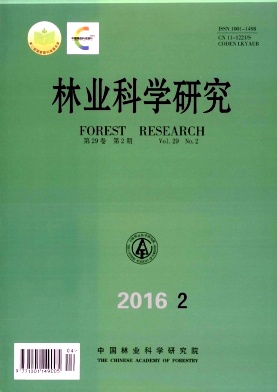|
[1]
|
Schmutterer H. The neem tree Azadirachta indica A. Juss. and other meliaceous plants: sources of unique natural products for integrated pest management, medicine, industry and other purposes[M].VCH Verlagsgesellschaft mbH, 1995: 1-34. |
|
[2]
|
张燕平, 赖永祺, 彭兴民, 等. 印楝的世界地理分布与引种栽培概况[J]. 林业调查规划, 2002, 27(3): 98-101.
|
|
[3]
|
Sombatsiri K, Ermel K, Schmutterer H. Other meliaceous plants containing ingredients for integrated pest management and further purposell. The Neem tree Azadirachta indica A. Juss and other meliaceousplants[M]. Germany: VCH, 1995: 585-597. |
|
[4]
|
Hashmat I, Azad H, Ahmed A. Neem (Azadirachta indica A. Juss)-A nature's drugstore: an overview[J].International Research Journal of Biological Sciences,2012,1(6):76-79. |
|
[5]
|
Liu N, Sun B, Wu P, et al. Chemopreventive Effects of Azadirachta indica on Cancer Marker Indices and Ultrastructural Changes During 1, 2-Dimethylhydrazine-Induced Colon Carcinogenesis in Rats[J]. Cell biochemistry and biophysics, 2015, 1(73): 101-106. |
|
[6]
|
Thanigaivel S, Vijayakumar S, Gopinath S, et al. In vivo and in vitro antimicrobial activity of Azadirachta indica (Lin) against Citrobacter freundii isolated from naturally infected Tilapia (Oreochromis mossambicus)[J]. Aquaculture, 2015, 1(437): 252-255. |
|
[7]
|
王有琼, 马李一, 张重权, 等. 印楝叶多酚提取及体外抗氧化活性[J]. 精细化工, 2015, 1(32): 64-68.
|
|
[8]
|
彭兴民,吴疆翀,王有琼,等. 药用印楝表型选择的因子分析及综合评价[J]. 林业科学研究,2015,28(4):464-472.
|
|
[9]
|
彭兴民, 吴疆翀, 张燕平, 等. 印楝属(Azadirachta A. Juss.)植物分类及分布的研究现状[J].植物遗传资源学报,2012, 13(4):583-588.
|
|
[10]
|
彭兴民, 吴疆翀, 郑益兴, 等. 云南引种印楝实生种群的表型变异[J]. 植物生态学报, 2012, 36(6): 560-571.
|
|
[11]
|
彭兴民, 吴疆翀, 郑益兴, 等. 云南引种印楝实生栽培种群表型的地理变异[J]. 林业科学研究, 2013, 26(4): 399-405.
|
|
[12]
|
Rohlf F J. NTSYSPC: Numerical taxonomy and multivariate analysis system[M].New York: Exter Publishers, 1994. |
|
[13]
|
刘仁权,史周华, 李国春, 等.SPSS统计软件[M].北京:中国中医药出版社,2011:161.
|
|
[14]
|
Dhilon R S, Ahlawat K, Pundir J S. Botany of Neem[C]//Singh K K, Phogat S, Tomar A, et al. Neem: A Treatise. New Delhi, India: I.K. International Publishing House Pvt. Ltd., 2008:30-43. |
|
[15]
|
Tomar A, Singh K K. Neem: An Introduction[C]//Singh K K, Phogat S, Tomar A, et al. Neem: A Treatise. New Delhi, India: I.K. International Publishing House Pvt. Ltd., 2008:3-15. |
|
[16]
|
Schmutterer H. The neem tree Azadirachtaindica A. Juss. And other meliaceous plants: sources of unique natural products for integrated pest management, medicine, industry and other purposes[M]. Weinheim:VCH, Verlagsgesellschaft mbH, 1995: 585-597. |
|
[17]
|
Chowdhary A, Singh V. Geographical distribution, Ethnobotany and Indigenous Uses of Neem[C]//Singh K K, Phogat S, Tomar A, et al. Neem: A Treatise. New Delhi, India: I.K. International Publishing House Pvt. Ltd., 2008:16-29. |
|
[18]
|
吴疆翀,彭兴民,郑益兴,等. 印楝异交率和基因流的分析[J]. 林业科学研究,2008,21(5): 593-598.
|
|
[19]
|
解玮佳, 李世峰, 李树发, 等. 高山杜鹃与大喇叭杜鹃种间杂交过程的观察研究[J]. 西北植物学报, 2012, 32(12): 2432-2437.
|
|
[20]
|
吴疆翀.印楝繁育系统的研究[D].北京:中国林业科学研究院,2007:42-43.
|
|
[21]
|
徐义流, 张绍铃. 花粉-雌蕊相互作用的分子基础[J]. 西北植物学报, 2004, 23(10): 1800-1809.
|





 DownLoad:
DownLoad: